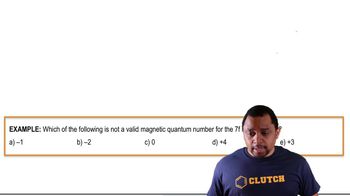If we assume that the energy-level diagrams for homonuclear diatomic molecules shown in Figure 9.43 can be applied to heteronuclear diatomic molecules and ions, predict the bond order and magnetic behavior of (d) ClF.
 Verified step by step guidance
Verified step by step guidance
Verified video answer for a similar problem:
Key Concepts
Bond Order

Molecular Orbital Theory

Magnetic Behavior

Using Figures 9.35 and 9.43 as guides, draw the molecular orbital electron configuration for (d) Ne22 +. In each case indicate whether the addition of an electron to the ion would increase or decrease the bond order of the species.
If we assume that the energy-level diagrams for homonuclear diatomic molecules shown in Figure 9.43 can be applied to heteronuclear diatomic molecules and ions, predict the bond order and magnetic behavior of (b) NO+.
Determine the electron configurations for CN+, CN, and CN-. (a) Which species has the strongest C¬N bond?
Determine the electron configurations for CN+, CN, and CN-. (b) Which species, if any, has unpaired electrons?
(a) The nitric oxide molecule, NO, readily loses one electron to form the NO+ ion. Which of the following is the best explanation of why this happens: (i) Oxygen is more electronegative than nitrogen, (ii) The highest energy electron in NO lies in a π2p* molecular orbital, or (iii) The π2p* MO in NO is completely filled.
